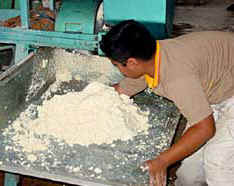| Making Masa and Tortillas -- Part 2 | ||
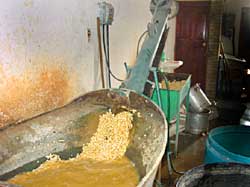 |
The
next morning, the corn is moved to the washing tub where the limed
cooking water is washed away. Then the corn is lifted up
a drainage shoot by an auger. The washed, drained, but still wet corn is dumped into a vat where it will be scooped out by the bucket full and taken to the grinder.
In the hopper of the grinder, a controlled amount of water is added to the corn. |
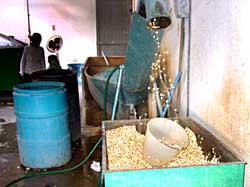 |
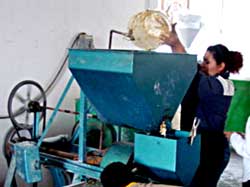 |
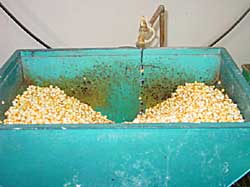 |
|
 |
|
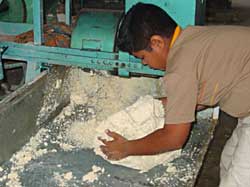 |
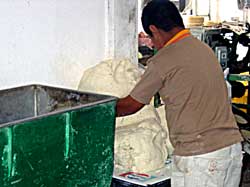 |
The damp, ground corn, now called masa, is pressed into large balls and stacked on a table ready to go to the tortilla making machine. This raw masa is also sold to customers who wish to use it for making tamales or gorditas at home. |
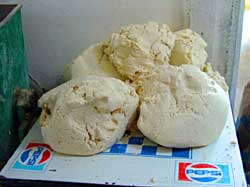 |
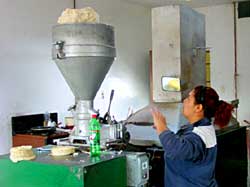 |
Like
a star basketball player, she had just tossed one of the masa balls into
the hopper of the tortilla machine. (I hate when I miss great shots like
that.) The masa is extruded and cut into round discs that move on a metal conveyer into the top part of the oven. |
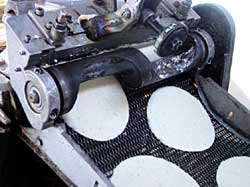 |
 |
At the end of each level of the oven, the tortillas fall to a lower level belt which takes them back through the oven again. |
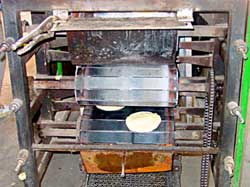 |
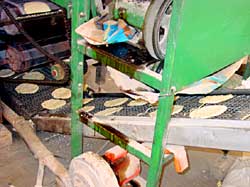 |
|
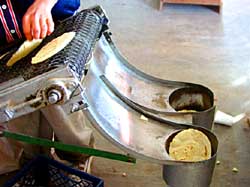 |
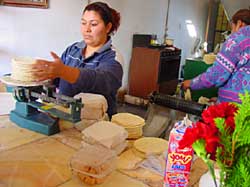 |
As soon as the tortillas come out the machine, they are gathered into one kilogram stacks and wrapped in two layers of heavy paper. Generally a one kilo package costs 8 pesos -- about US 80 cents. One can buy a smaller amount than one kilo. I often buy one peso's worth -- enough for a single meal for me. |
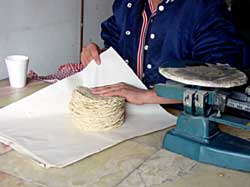 |
|
This store provides home delivery for regular customers in the neighbor-hood. Caesar is loading up for his noontime delivery run. Warm freshly made tortillas delivered to your door just in time for lunch -- beats the hell out of those packaged things in the supermarket.
|
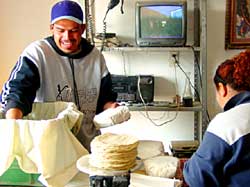 |
By 1:30 PM the tortillas have been delivered or sold in the store. Then the cleanup begins. When Caesar returns from his deliveries, he will begin preparing the corn for tomorrow's tortillas, as we saw in part one of the never ending tortilla story.
|
|
|
||
|
After
Word: Despite how simple the ingredients and the processing are, there is still a difference in the taste and texture of tortillas from different shops. When I eat at Doņa Martha's house, I can tell which of the neighborhood tortillerias made them. You
can buy this prepared dry masa in the grocery store for making masa-based
things at home tortillas, gorditas, enchiladas, tamales. |
||
| Page Directory | ||
